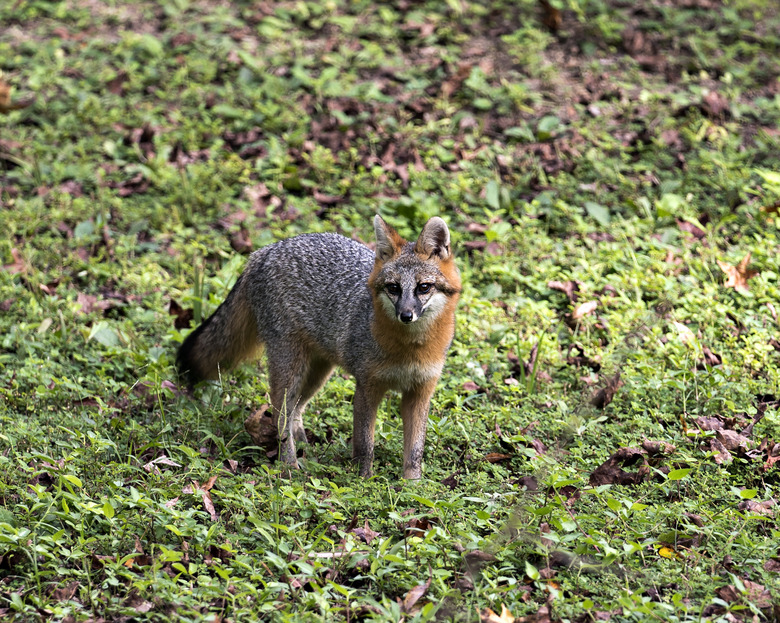Gray Fox Adaptations & Survival Behaviors
Gray foxes are relatively successful small carnivores found throughout North America and the top part of South America. They owe their success to a number of physical and behavioral characteristics. Like other mammalian carnivores, including closely related species such as dogs, gray foxes don't instantly begin life as excellent hunters; they have to learn what to do. This ability to learn and adapt to new situations is probably one of the reasons gray foxes are numerous and widespread.
Physical Characteristics
Physical Characteristics
The subdued gray, white, black and russet colors of gray foxes means they blend in to their woodland habitat. The mixture of colors also breaks up the animals' outline. These colors and markings make the animals inconspicuous to both predators and prey. They are adapted for an omnivorous diet, eating both plant and animal material, meaning they are not dependent on a single food source. They mostly eat smaller mammals such as rabbits and rodents, but are not adverse to fruit, carrion and invertebrates. Gray foxes can usually find something to eat even when resources are scarce.
Reproduction
Reproduction
Both parents play their part in preparing the fox pups for adult life. The fathers provide most of the solid food when the pups are weaned and help the pups learn how to hunt by practicing stalking and pouncing. Both parents protect the juvenile foxes from predators. Sharing the tasks of pup-raising means the females have less of a struggle, ensuring the pups survive.
Social
Aside from raising their young, gray foxes are primarily solitary animals. However they need to communicate with each other, to establish territories and to find mates. They communicate with sound, by barking, scent and body language.
Skills
Skills
The gray fox is apparently the only canid — member of the dog family — that can climb trees. This is a useful adaptation for the species. Gray foxes are small enough to be a prey animal for larger canids, such as coyotes and wolves. Being able to climb trees when the larger predators cannot increases survival rates. The skill also allows them to pursue arboreal prey animals such as squirrels. Gray foxes have also learned to store food. They dig holes and stash excess food for later.
Around Humans
Around Humans
Unlike red foxes, gray foxes are nervous around humans and rarely enter urban areas. Considering that humans have been and still are a serious threat to nearly all mammalian carnivores, this is a useful characteristic.
Cite This Article
MLA
Willson, Judith. "Gray Fox Adaptations & Survival Behaviors" sciencing.com, https://www.sciencing.com/gray-fox-adaptations-survival-behaviors-8447034/. 22 November 2019.
APA
Willson, Judith. (2019, November 22). Gray Fox Adaptations & Survival Behaviors. sciencing.com. Retrieved from https://www.sciencing.com/gray-fox-adaptations-survival-behaviors-8447034/
Chicago
Willson, Judith. Gray Fox Adaptations & Survival Behaviors last modified March 24, 2022. https://www.sciencing.com/gray-fox-adaptations-survival-behaviors-8447034/
